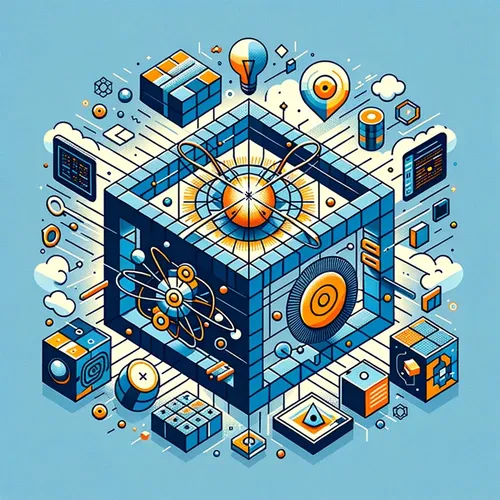Quantum-Classical Fusion: Hybrid Computing's Seismic Shift
- Author
- Quiet. Please
- Published
- Wed 27 Aug 2025
- Episode Link
- https://www.spreaker.com/episode/quantum-classical-fusion-hybrid-computing-s-seismic-shift--67531433
This is your Quantum Computing 101 podcast.
Today’s story starts where code meets qubit, and drama plays out across the silicon and superposition—because this week marks a seismic leap in quantum-classical hybrid computing. I’m Leo, Learning Enhanced Operator, and while my workspace hums with photons and the cool hush of liquid helium, right now it’s the future itself that’s making the most noise.
Late Monday, IBM and AMD announced a partnership that’s sending shockwaves through both quantum and high-performance computing worlds. Their quantum-centric supercomputing blends IBM’s quantum processors with AMD’s blistering EPYC and Instinct hardware. This isn’t just a marriage of speed and possibility—it’s a milestone in making hybrid solutions truly practical. Imagine AI-driven simulations where classical cores toss problems into quantum space, get them solved via entangled logic gates, and fling the results back for analysis with latencies counted in microseconds. That’s the vision being validated right now, with open-source tools like Qiskit and new workflow engines orchestrating the symphony. Enterprises hungry for breakthroughs in molecular simulations, drug discovery, and optimization have been waiting for just this sort of scalable hybrid[3][7].
Here’s the technical drama: Quantum machines excel at certain problems—factorization, optimization, simulation of complex molecules—but they flounder with others that classical supercomputers crush. By tightly integrating the CPUs, GPUs, and quantum processors in an operational datacenter, the new hybrid workflows take advantage of mature high-performance resource management frameworks like Slurm, plus the expressiveness of CUDA-Q and Qiskit. Real-time feedback loops for error correction and distributed scheduling are key—imagine Schrodinger’s cats being herded using classical code and quantum logic in tandem without ever opening the box. It gives developers the power to deploy hybrid algorithms rapidly, leveraging existing expertise and infrastructure, while quantum pursues what classical cannot reach[1][3][7].
But hybridization isn’t just corporate theater. This week, scientists at UC Riverside simulated linking multiple small quantum chips—even with ultra-noisy connections—into one fault-tolerant system. This modular approach makes scaling not just possible but practical, even before the hardware is perfect. It’s as if we discovered we could build quantum “superhighways” using everyday asphalt rather than waiting for some dream material. Suddenly, global collaboration becomes a reality: Vietnam launched VNQuantum to link researchers and enterprises nationwide, and in Canada, startups are joining government initiatives to commercialize hybrid platforms[4].
From the hum of neutral-atom qubits to the flash of lithium niobate photonic chips, hybrid quantum-classical solutions are combining the nimbleness of classical computing—speed, reliability, enterprise-scale—with quantum’s superpower for parallelism and entanglement. This isn’t convergence on paper; it’s happening in datacenters and labs, with breakthroughs in rapid error correction and coherent qubit virtualization[2][5][6].
You can feel it: enterprises adopting quantum-enhanced AI, manufacturing lines becoming smarter and leaner, and researchers worldwide plugging into these new architectures. The quantum-classical alliance isn’t just an upgrade—it’s a reimagining, a bold bet on collaboration across dimensions.
If today’s hybrid breakthroughs spark your curiosity, if you want to know how quantum might shape tomorrow’s medicine, security, or even daily life, let’s keep this conversation going. Email me at [email protected] with your questions or ideas. Don’t forget to subscribe to Quantum Computing 101, and remember this has been a Quiet Please Production. For more, visit quietplease.ai. The future...
